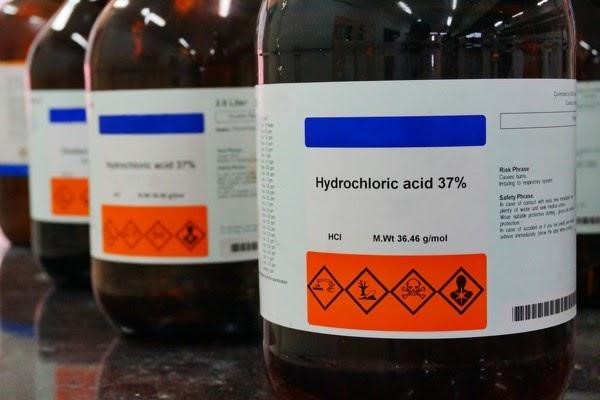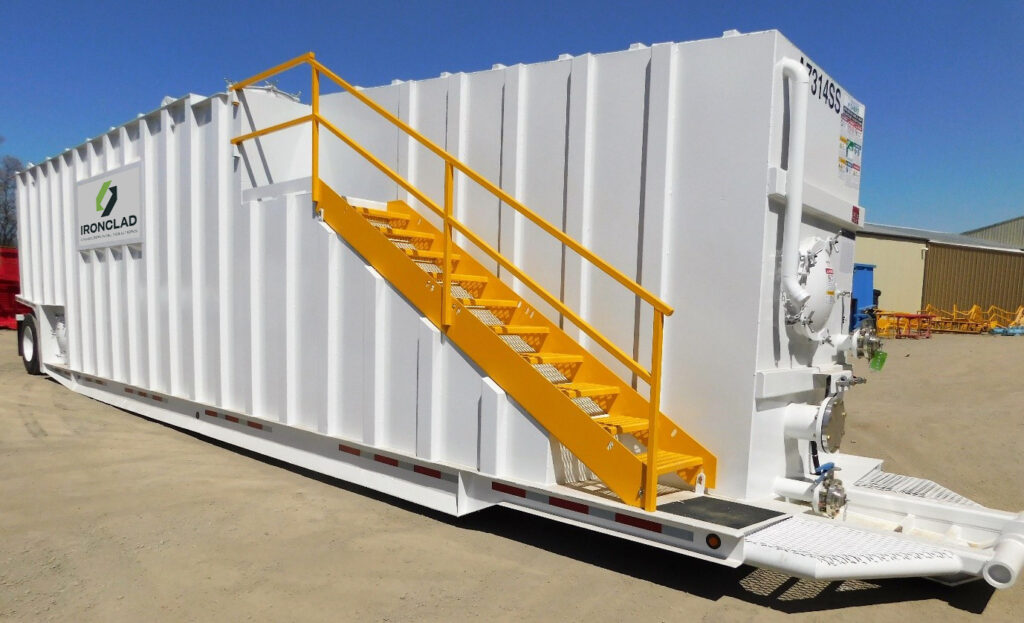Chemical Storage Tanks: A Complete Guide
Chemical Storage Tanks: A Complete Guide
Chemical manufacturers use various chemicals that are inherently corrosive and it is difficult to imagine an industry that does not use any chemicals.
- Refineries use propane, liquefied natural gas, petroleum products (gasoline, diesel), crude oil, and other chemicals.
- Paint manufacturers use various types of latex polymers in the manufacturing process.
- Automotive manufacturers use acids, lubricants, and coatings.
- Food processing companies require preservatives, additives, and more.
The frequent use of chemicals across industries presents significant challenges around chemical handling and safety. If you don’t store and dispose of chemicals appropriately, they may cause massive health and environmental hazards. That’s why chemical tanks have become such an indispensable utility for businesses worldwide.
Remember, chemicals do not have a universal property. Some substances are inert, while others are highly acidic and corrosive. It is, therefore, essential to select the proper storage solution for your business.
Let’s take a look at what differentiates chemical storage tanks from water tanks and explore some affordable options. Keep reading to learn more about the various types of tanks, their applications, and their benefits.
What are Industrial Chemical Storage Tanks?
Industrial chemical tanks are heavy-duty container units that safely store, process, mix, and transport industrial chemicals, fuels, petroleum products, and other solutions.
These tanks can either be underground or aboveground, depending on the chemical that they are handling.
They have a specially engineered construction with secondary containment units that helps to avoid chemicals from coming into contact with the environment.
While designing double-wall tanks for chemical storage, manufacturers use specific materials that do not react with the chemical or reduce the chemical’s potency.
Additionally, some premium tanks also provide an insulated area that preserves the temperature of the stored compound.
Features of Industrial Chemical Tanks
Typical chemical storage tanks have the following features:
- UV-stabilized plastic body
- High-density, cross-linked polymer construction
- Durable, heavy-duty design
- Weather-resistant
- Offers both short and long-term storage solution

What Should You Consider When Buying or Renting a Chemical Storage Tank?
You must consider several factors before selecting tanks. Chemical storage units have various construction styles and sizes.
While some low-cost tanks may seem lucrative initially, they may be incapable of delivering what you need in the long run.
Here are a few tips for selecting chemical tanks:
Consider the Purpose and Use
- Use Case – Find the intended use of the chemical storage tank. Do you need the chemical tank for storage, processing, or transport?
- Location – When deciding where to place the storage tank, you need to identify the range of temperatures, pressure, and external factors of the site.
- Cost – Compare your budget with your desired application. Find out the duration of your storage to determine if renting versus buying is more economical. Make a list of additional features specific to your industry that you may require.
- Type of Tank – Tank manufacturers have a vast array of chemical and acid storage solutions, so you need to have a good idea of what you’re looking for before renting or purchasing a chemical storage tank.
Type of Chemical and Acids
The type of chemicals and acids you will be handling is one of the most crucial elements when selecting a chemical storage tank. Every acid has different properties and reacts differently with the storage medium and the surrounding.
For instance, a hydrochloric acid storage tank may not be suitable for storing caustic soda due to the difference in their pH level. Some plastic tanks may prove beneficial in the short term but may soon end up useless.
Carelessness in knowing the type and concentration of acid can lead to buying the wrong storage tank.
An inappropriate storage tank can have severe implications such as equipment damage, personnel injury, and financial setbacks.
Classifying Chemicals
We can classify chemicals as acids, bases, organics, catalysts, fuel products, etc.
Acids
Acids react strongly with metals and corrode the inner walls, while petroleum products are highly flammable.
Acids like hydrochloric acid (HCl), sulfuric acid (H2SO4), and nitric acid (HNO3) are all essential industrial chemicals for manufacturing metal, food products, specialty chemicals, and pharmaceutical precursors.
However, when they come into contact with your eyes, skin, or mucous membranes, they cause chemical burns.
Vapors/Aerosols
Acid vapors and aerosols are respiratory tract irritants and may cause pulmonary impairment, dental erosion, and laryngeal cancer. For that reason, it is essential to use an appropriate storage tank for HCl, H2SO4, and HNO3 [1].
Chlorine/Fluorine
Chlorine and fluorine-based chemicals are volatile, while ammonia-based substances can be toxic.

Tank Building Materials
Chemical storage tanks use a variety of metals, polymers, and composites when they are built. When you’re buying chemical tanks, make sure you know the pros and cons of each material.
- Stainless Steel: A stainless steel storage tank is perfect for storing high-temperature, high-volume, organic and inorganic products that are compatible with the grade of stainless steel to be used in the fabrication of the tank.
- Cross-Linked and High-Density Polyethylene: Poly tanks are excellent choices for storing chemicals. They do not react with acids with high corroding potential, demonstrate exceptional durability, and resist sudden temperature changes.
- Linear Polyethylene: A linear polyethylene tank can handle acids at low concentrations. They are cost-efficient but do not offer as much tank life as cross-linked polyethylene due to their low build quality.

Renting vs. Buying Chemical Tanks
If you need chemical storage tanks temporarily, it doesn’t make much sense to spend significant upfront capital. Another disadvantage of buying a tank is you need to perform routine cleaning, maintenance, and upkeep, which may further add to its cost. In such cases, renting storage tanks is the more convenient option.
On the other hand, renting tanks can get expensive for long-term chemical storage, so knowing how long you plan to keep the storage tank will weigh heavily on your decision.
How do Chemical Bulk Storage Tanks Improve Productivity?
Apart from helping you meet the safety guidelines, chemical tanks provide many additional benefits for your organization. Read on to learn how chemical storage tanks also help improve productivity.
Environmentally Conscious
Many chemical manufacturers that treat wastewater in septic tanks or store chemicals like hydrochloric acid and caustic coda use intermediate bulk containers (IBCs). Storing chemicals in intermediate containers is expensive, inefficient, and time-consuming.
IBCs have roughly a 1000-liter capacity and thus require frequent loading and unloading. Therefore, these tanks put workers at risk and carry the dangers of leaks and spillages.
On the contrary, industrial chemical tanks help you fill more than 5,000 gallons (18,000 liters). Reducing the number of IBCs required reduces contamination risks and promotes safer working conditions.
Worker Safety
Frequently handling chemicals in IBCs and smaller plastic tanks may expose workers to toxic fumes, acid burns, and other health hazards.
Chemical tanks protect your employees from potential risks since they do not require frequent unloading. Less worker intervention means you can divert your workforce to more critical functions in the company.
Lower Costs
When considering the storage price per gallon of material, large chemical storage tanks offer much better returns. In addition, when you order more materials, you can get bulk discounts from your vendors. Bulk chemical storage tanks also reduce the delivery and material handling costs.
Easy to Customize
You can place chemical storage tanks centrally in your plant and create an efficient production chain for managing the material from the tank to the end application. You can also attach chemical storage tanks with water tanks for creating intermediate processes.
Modern plastic tanks also come equipped with sensor-controlled pumps, agitators, heating coils, safety sensors, and even staircases for easy access.
What are the Safety Features of Chemical Storage Tanks?
The dimensions of chemical storage tanks generally follow design guidelines that help avert the risk of health and environmental hazards. The following features help keep commercial chemical tanks safe:
- Double walls to contain spillages in case of inner wall damage
- Fire monitors, control sensors, and protection systems
- Clear signs and warning
- Adequate spacing between two tanks in case of multi-structures
- Pressure relief and blow-off valves
- Insulation
- Automatic shut-off valves

Get Your Bulk Chemical Storage Solution
Ironclad Environmental Solutions is a leading provider of cross-linked polyethylene tanks, stainless steel storage tanks, chemical mixing frac tanks, and double-walled tanks. Our rent-ready, industry-leading containment solutions are 24/7/365 available at your service.
We foster a culture of safety that adheres to strict OSHA guidelines and DOT regulations, making sure all our products meet the most stringent quality standards and safety guidelines.
FAQs
What Symbols or Warning Signs Should be Present on a Chemical Storage Tank?
According to OSHA Chemical Labeling Requirements, there are nine symbols and warning signs you should use for storing chemicals. They include:
- Health Hazard: A health hazard sign represents that content includes cancer-causing agents or substances that may lead to respiratory, chronic, or reproductive hazards.
- Flame: If you are storing flammable, self-ignited materials or chemicals that emit combustible gas, you must use the flame sign.
- Exclamation Mark: Exclamation skin represents a narcotic product or an irritant that may affect your skin, eye, or respiratory tract.
- Gas Cylinder: The sign depicting the gas cylinder shows that you’re storing ammonia, liquid nitrogen, etc., under high pressure.
- Corrosion: This sign helps highlight chemicals that burn your skin, cause eye damage, and cause decay in metals.
- Exploding Bomb: An explosion sign shows volatile and self-reactive materials like organic peroxides that carry the risk of explosion even without air exposure.
- Flame Over Circle: When there are oxidizers in your storage tanks, you must use the flame-over-circle sign to show chemicals that aid burning.
- Skull and Crossbones: Chemicals with acute toxicity risks, such as poisons, lead, etc., have the skull and crossbones sign.
- Environmental Hazard: The environmental hazard sign depicts materials that are harmful to aquatic wildlife.
Do Chemical Storage Tanks Require Color Coding?
Many industrial water tanks and chemical storage tanks have a color-coding system for classifying chemical storage. According to the National Fire Protection Association (NFPA), red shows flammability, yellow highlights reactivity, blue is for health, and white depicts contact hazards.
How Do You Test the Quality of a Chemical Storage Tank?
According to the ASTM D-1998 standard, polyethylene tanks, such as the one we use for chemical storage, must have:
- Consistency in the tank walls
- High impact strength
- Overall structural integrity
To test the quality of chemical storage tanks, you can perform inspection tests, drop tests, and tests to detect leaks. You can also use a checklist to perform quality checks. Inspect the storage tanks for common issues like cracks, vent leakages, fitting area strength, and condition of the containment area.